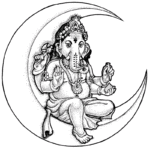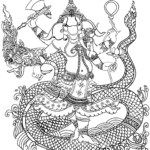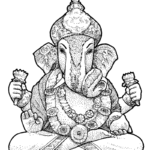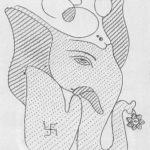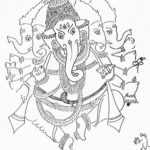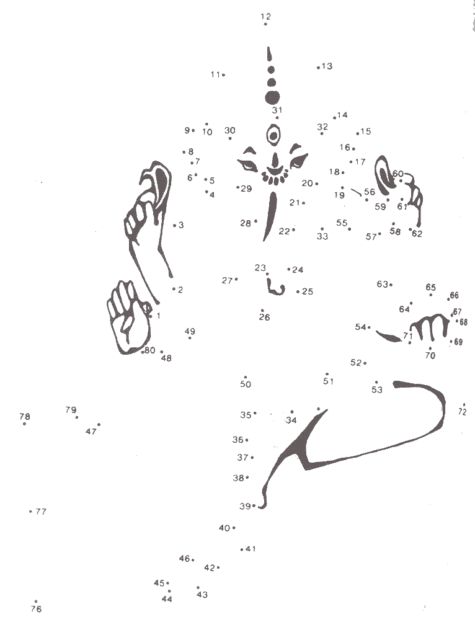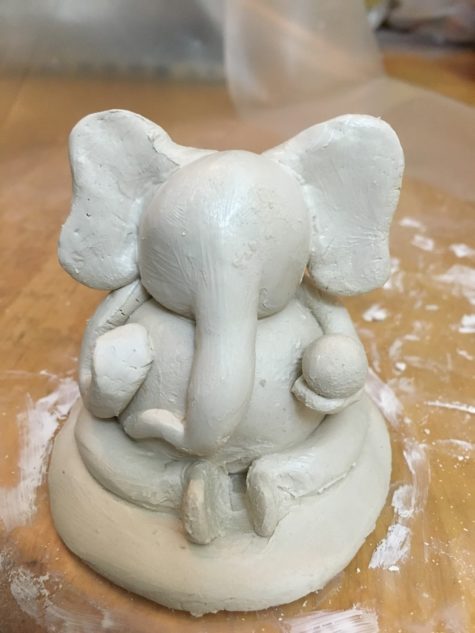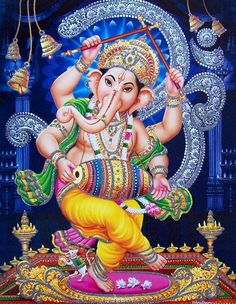Play
The Story Of Parvati’s Wounds
This wonderful story is a great example of how the entire world is a single unit.
Ganesha was known to be a mischievous child and he would indulge in a number of naughty activities. One time, he came across a cat while he was playing, and proceeded to mess around with it. He picked up the cat and threw it on the ground, pulling its tail and having fun with it, while the cat meowed in pain. Ganesha failed to notice it and played around until he was tired and then came back home.
On reaching Mount Kailash, Ganesha was shocked to see Parvati lying down outside the home, with wounds all over her body, and crying in pain. Ganesha rushed to her and asked her who did this. To which Parvati replied that Ganesha himself had done this to her. The cat was actually a form of Parvati, and she wanted to play around with her son. But Ganesha treated her unfairly and ruthlessly and his actions on the cat have reflected on his own mother.
Ganesha was utterly sorry for his behavior and took an oath to treat all animals in a gentle manner with care and affection.
Moral
This story gives a very important lesson that does unto others as you would want others to do unto you. And this also includes animals, being careful of them, and not causing anyone any harm.
From: First Cry Parenting
The Story Of The Missing Conch
This is a wonderful story that showed how even Lord Vishnu had to relent to Lord Ganesha’s antics.
Vishnu was known to have a conch with him that he kept with himself at all times. One fine day, he noticed that the conch was missing and it was nowhere to be found. This got him extremely annoyed and he rallied all his powers into finding the conch.
As the search for the conch was on, Lord Vishnu suddenly began hearing the sound of the conch emanating from a distance. He began searching for it in that direction and soon realized that the sound was coming from Mount Kailash itself. As he reached the mountain, he found out that the conch had been taken by Lord Ganesha and he was busy blowing it. Knowing that Lord Ganesha will not relent easily, he sought out Shiva and asked him to request Ganesha to return the conch back to him.
Shiva said he, too, didn’t have any power of Ganesha’s wishes and the only way to appease him is to perform a puja for him. So Lord Vishnu did do that. He set up all the necessary elements for the puja and worshiped Ganesha with his heart. Seeing this, Ganesha was extremely pleased and he returned Vishnu’s conch back to him.
Moral
The story quite interestingly reveals the fun side to Lord Ganesha and his antics. Furthermore, it teaches us about humility by showing how a God as great as Vishnu, did not hesitate to worship Ganesha.
From: First Cry Parenting
Coloring Ganesha
If you enjoyed the dot-to-dot Ganesh, this will be even more fun. I found a bunch of different Ganesh coloring pages, and have uploaded them into a photo gallery. I think they are large enough to print and color, and if you have an app on your phone that allows such a thing, that’s fun too!
The Lord Who Is Hidden In All Things
Make a Papier Mache Ganesh
 This is a simple method for a paper mache Ganesh. Some artistic ability is helpful, but if you are willing to simply get in there and have fun, it might surprise you how easy it could turn out to be!
This is a simple method for a paper mache Ganesh. Some artistic ability is helpful, but if you are willing to simply get in there and have fun, it might surprise you how easy it could turn out to be!
The materials needed are:
- Paper mache
- Latex or other water-based paint in a variety of colors
- Gold-leaf or metallic gold paint
- Paint brushes
- Sand paper
- Putty or joint compound
- Miscellaneous ornaments and cloth for dressing the image
- Replicas of the various implements he will be holding
Instructions:
- Mix paper mache to a firm but homogeneously wet consistency.
- Make an armature (skeleton) of wood, Styrofoam, or similar material.
- Create the image by covering the armature with paper mache.
- Make implements for each hand and make sure they can be inserted and glued later when the image is dry
- Brush the exterior smooth with a wet brush.
- Let the image dry in a cool place, away from the sunlight. (Drying time is usually one month for every foot in height for a clay image, three weeks for paper mache.)
- When dry, sand with coarse, then fine sandpaper
- Fill cracks with putty or joint compound.
- Sand again
- Apply a white primer and sand with very fine sandpaper.
- Make the image dust-free.
- Paint the torso, head, trunk, and limbs
- Use red paint and a fine brush for the Aum, swastika, and other – symbols.
- Paint, decorate, and/or assemble the various implements
- Place appropriate dress (traditionally white or red silk) upon the image.
- Glue the implements into the hands
- Decorate the image with ornaments, flowers, etc.
adapted from Loving Ganesa
by Satguru Sivaya Subramuniyaswami
An alternative method can be explored with this visual tutorial from Hobby Ideas:









